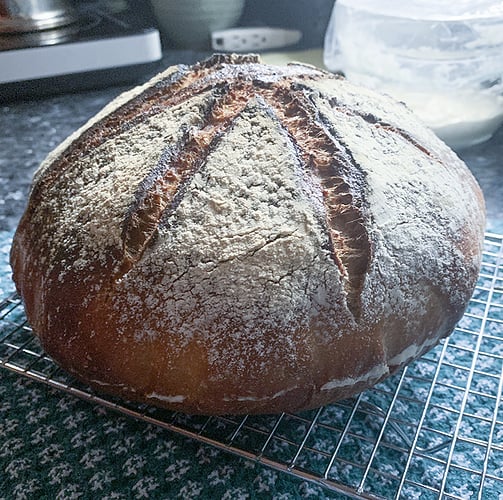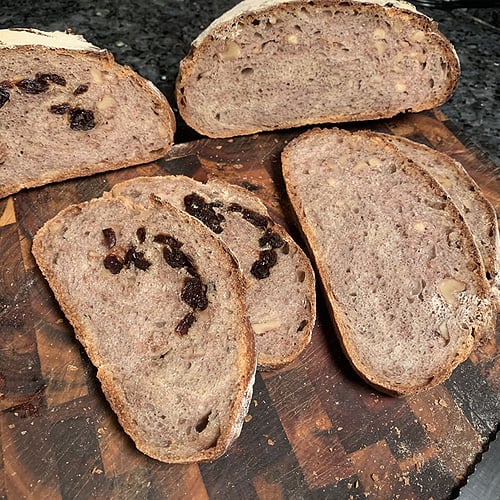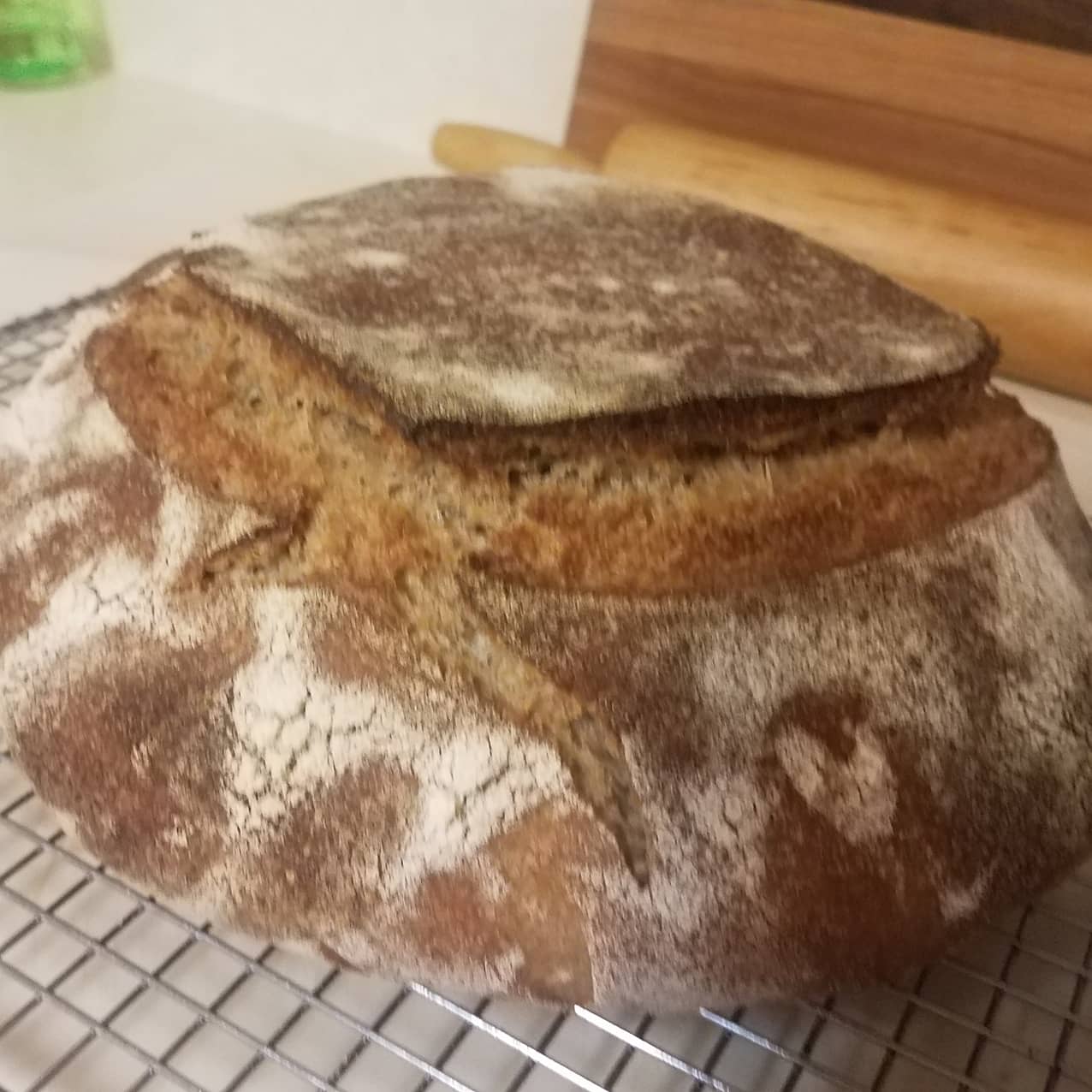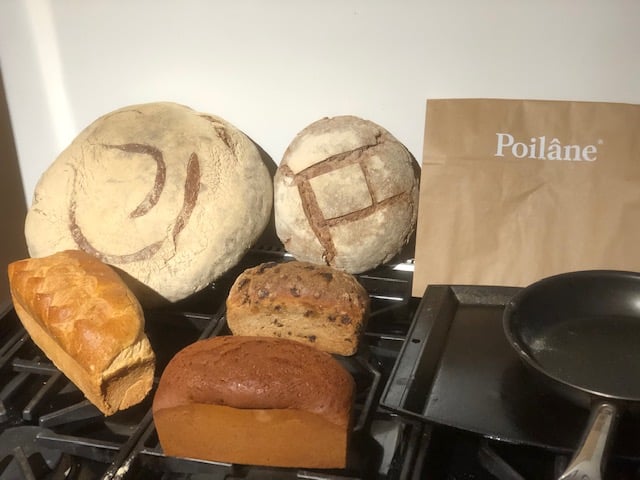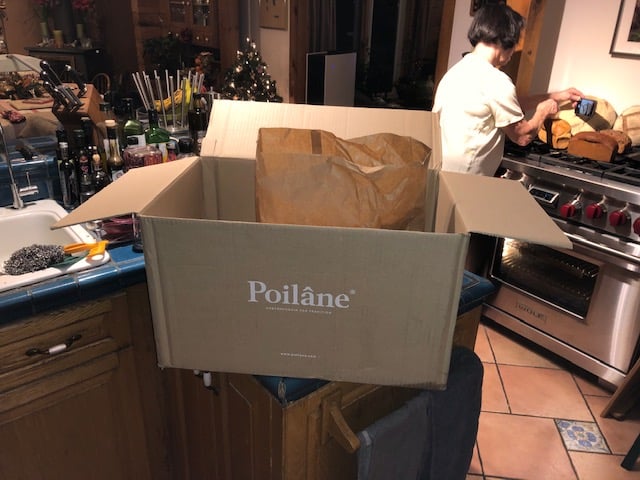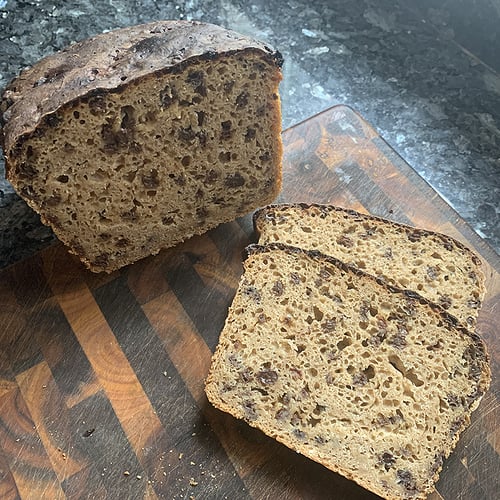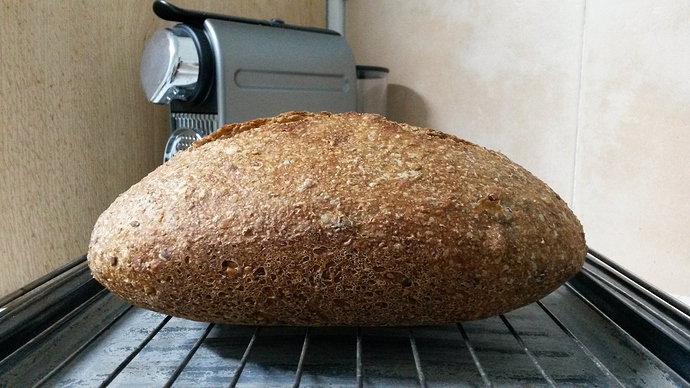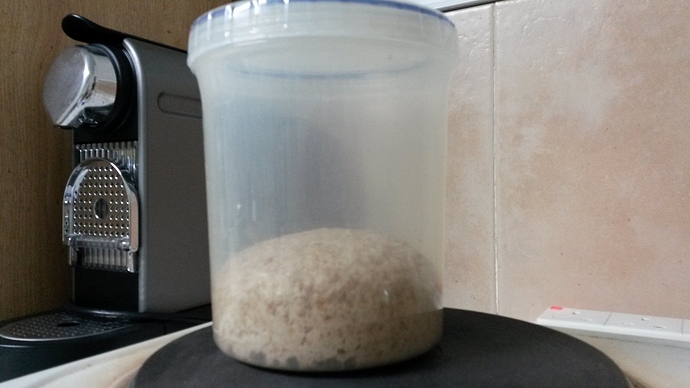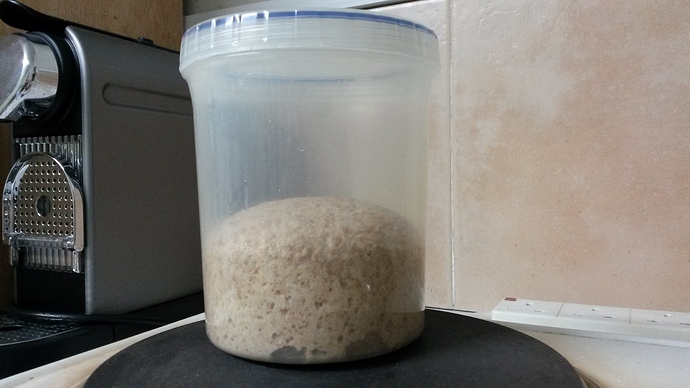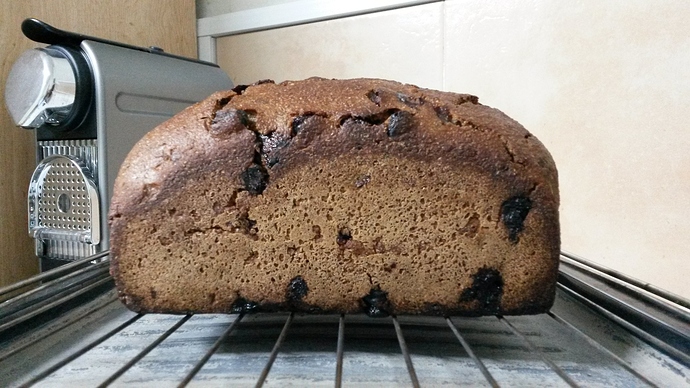I recently purchased Poilane: The secrets of the world famous bread bakery by Apollonia Poilane. The history of the bakery including contributions (innovations & expansion of the business) from 3 generations is very interesting as well as poignant and a little bittersweet. Apollonia took over at 18, just after starting at Harvard, when her parents were killed in an accident. Still, she tells the story of the bakery with joy and passion and that is my personal attraction to the book.
The primary recipe: Poilane-Style Sourdough and a variation - Walnut Sourdough are what I made. A stiff starter is called for vs the 100% hydration liquid starter most of us use. Apollonia writes that this recipe is based on the bakery recipe but adapted for the home baker. Like many bakery adapted recipes, hers includes using active dry yeast in addition to the stiff starter. Instead of dry yeast, I subbed some of my normal starter in addition to the stiff starter and backed off the water and flour to correspond with my liquid starter: I used 100 grams of my liquid starter so reduced water by 50 grams and flour by 50 grams. Additionally, although she wrote that the stiff starter should be ready in 48 hours, I thought it needed a bit more so fed it an extra time and gave it another 24 hours. At 72 hours I thought it was good to go and fit her description of what it should be like. I used the 3 day old stiff starter for my first Poilane-Style Sourdough. I fed the starter again and next day made the Walnut variation. The Walnut with 4 day old starter took half the time for the bulk!
This is the Poilane-style sourdough. I did reduce quantities to 75% of recipe. The recipe notes that the result is a 12 inch boule and that sounded too large for my small (3.5 quart) dutch oven.
Crumb of the Poilane-style sourdough.
Walnut sourdough and 1 loaf is walnut cranberry. Apollonia writes that they make the walnut loaves small: 6 loaves from the full recipe. I made 3 from my 75% reduction.
The breads are all delicious and I have a feeling they will get better as I get more experience and the starter “ages”. Are they better than the adaptation on Breadtopia: for Traditional Wholegrain Sourdough? I didn’t have the 2 breads side by side, but I don’t think they are that different. I had a lot of fun experimenting and will keep going and maybe do a side by side. There are some other recipes in the book to try and also some unique recipes for using any stale bread.
Overall, I think I will eventually use up the stiff starter and continue as I was with a liquid starter. The liquid is easier and since I did not notice a taste difference, I’ll go with easy 
But the book … if you enjoy reading about bakeries and history and bread … just reading the book is wonderful. There is also a “tips for Poilane Sourdough” which had some great tips for all sourdough baking, including the why: shaping, slicing, understanding the process and how the dough should feel, storing options. My personal rating is 5 of 5 stars!
***edit … I forgot … one thing that the book did not address was French flour vs U.S. flour vs other flours. Per some of my reading, French AP flour is milled finer and other differences. I did back of overall flour by 40 grams: 20 white and 20 whole wheat.
